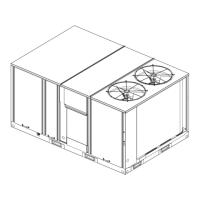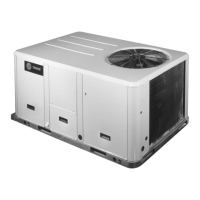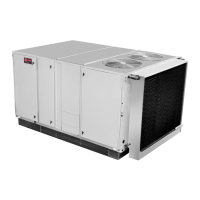Table 10. POE Oil recharge amount (fl. oz.)
Model
C1
25mm/18mm
C2
25mm/18mm
TS*150 56 38
TH*150 56 38
TH*150 Reheat 56 56
TS*155 112/182.4 62 (62)/96
TS*180 112 38
TH*180 81 38
TH*180 Reheat 56 56
TSH210, TS*175 112/182.4 38 (62)/96
TS*175 112 38 (62)
TS*210 112 38
TH*210 81 38
TH*210 Reheat 102 56
TS*240/200 112 56
TH*240 112 38
TH*240 Reheat 112 112
TS*250 112 106
TS*300 112 56
TH*300 76
(a)
(a) This is the total amount for both compressors (38oz per com-
pressor).
81
TH*300 Reheat 81 81
Start Up
RT-SVX25Q-EN 39
2. After the compressor and condenser fan have started
and operated for approximately 30 minutes, observe
the operating pressures. Compare the operating
pressures to the operating pressure curve in the
Service Facts.
3. Check system subcoo
ling. Foll
ow the instruction listed
on the subcooling charging curve in the Service Facts.
4. Repeat Step 1 through Step 3 for each refrigerant
circuit.
5. To stop the SERVICE TEST, turn the
main power
disconnect switch to the “Off” position or proceed to
the next component start-up proc
6. edure. Remove electro mechanical test mode
co
nnection
s (if applicable).
Dehumidification Option
Momentarily jump across the Test 1 and Test 2 terminals of
the LTB1 until the unit enters test mode 7. (Table 8, p. 36)
Once the unit is in the reheat test mode, verify that the
thre
e-way valv
e has shifted to the reheat position and that
the supply temperature rises 10°F more than when in
cooling mode stage 2. Monitor the suction pressure for 15
minutes. The suction pressure should remain within 5 psi
of normal cooling operation.
Heating Start-Up
1. Clamp an amp meter around one of 1
st
stage heater
power wires at the heater contactor.
2. ReliaTel Control Using the Service Test Guide in
Table 8, p. 36, continue the SERVICE TEST start-up
proced
ure for each
compressor circuit.
Momentarily jump across the Test 1 and Test 2
terminals o
n LTB one additional time if continuing
from previous component start-up or until the desired
start-up component test is started.
3. Verify that the heater stag
e is operat
ing properly.
4. Clamp an amp meter around one of 2
nd
stage heater
power wires at the heater contactor (if applicable).
5. ReliaTel Control Using the Service Test Guide in
Table 8, p. 36, continue the SERVICE.
6. TEST start-up procedure for ea
ch compressor circuit.
Mome
ntarily jump across the Test 1 and Test 2
terminals o
n LTB one additional time if continuing
from previous component start-up or until the desired
start-up component test is started.
7. Verify that the heater stag
e is operat
ing properly.
8. To stop the SERVICE TEST, turn
the main power
disconnect switch to the “Off” position or proceed to
the next component start-up procedure. Remove
electro mechanical test mode connections (if
applicable).
Variable Air Volume Applications
(Multi-zone, Traditional VAV)
Traditional VAV Standalone Operation
If a traditional VAV unit is required to operate without ICS,
BAS, or other “front end” controller, a jumper must be
placed between J6-2 and J6-4 of the RTRM to allow local
standalone control.
Supply Air Temperature Control -
Occupied Cooling and Heating
The RTRM is designed to maintain a selectable supply air
temperature of 40ºF to 80ºF with a +/- 3.5ºF deadband. To
reduce the risk of coil freezing, it is not recommended to
set the supply air temperature below 50ºF. In cooling
mode, if the supply air temperature is more than 3.5ºF
warmer than the selected temperature, a stage of cooling
will be turned ‘on’ (if available). Also, if the supply air
temperature is more than 3.5ºF cooler than the selected
temperature, a stage of cooling will be turned ‘off’. At very
low airflow, the unit may cycle stages ‘on’ and ‘off’ to
maintain an average discharge air temperature outside the
7 degrees deadband.
The RTRM utilizes a proportional and integral control
scheme with
the integration occurring when the supply air
temp
erature is outside the deadband. As long as the

